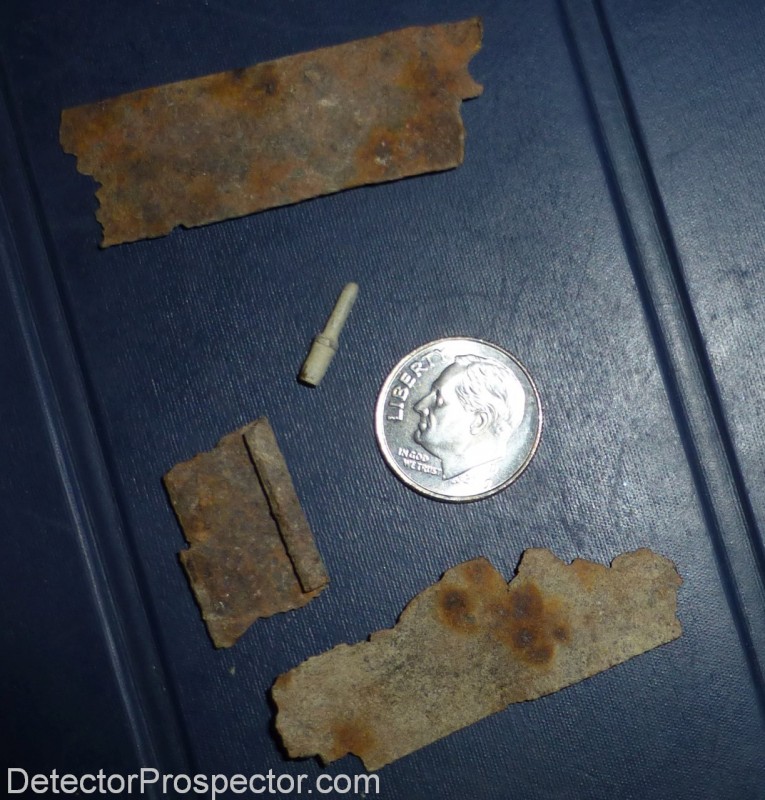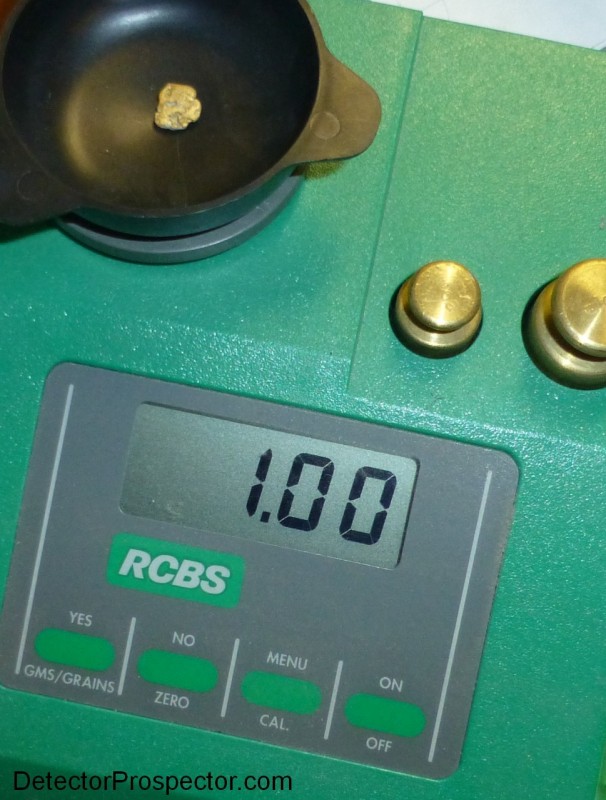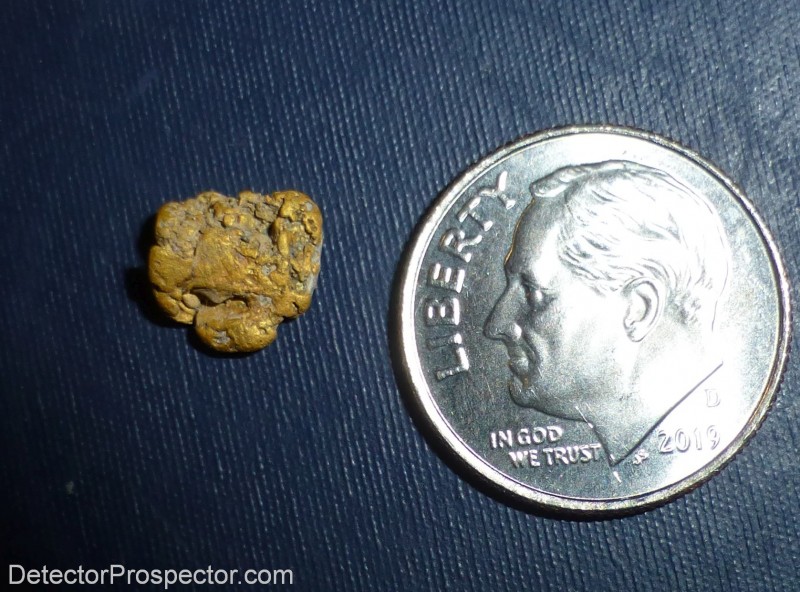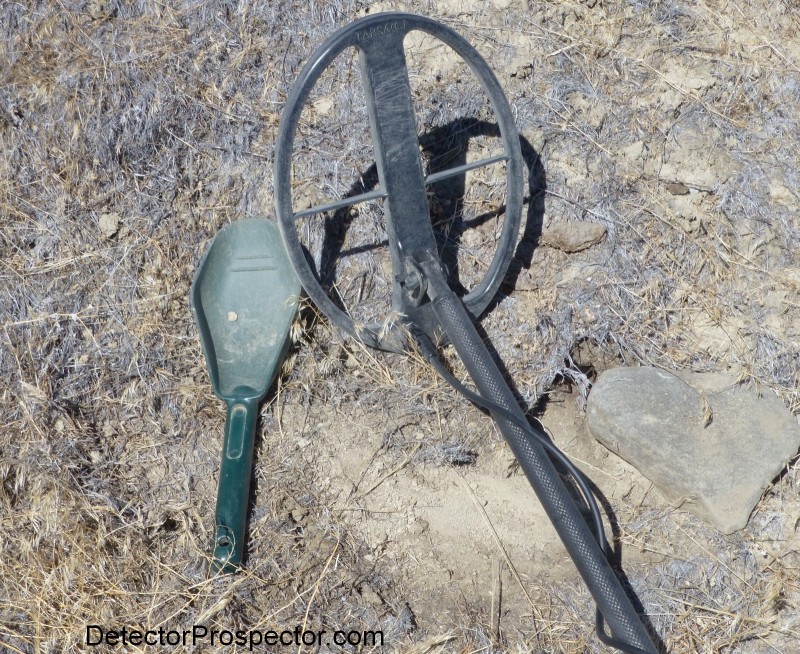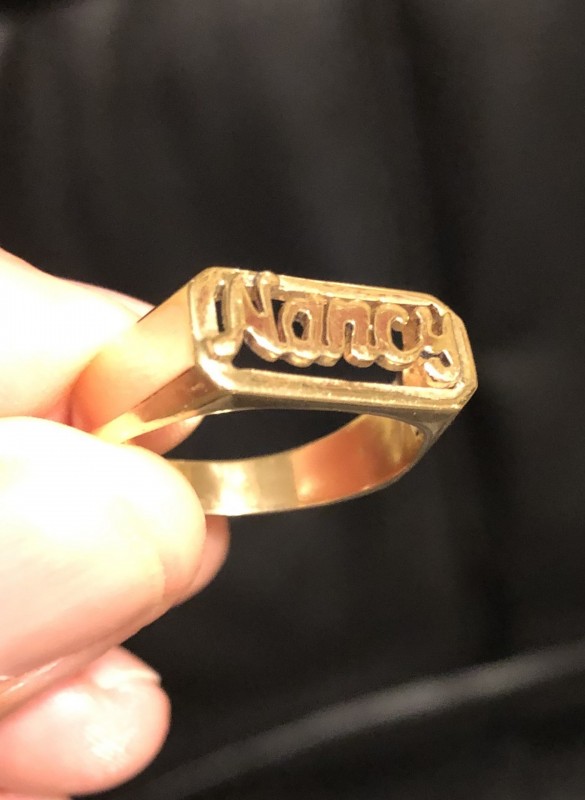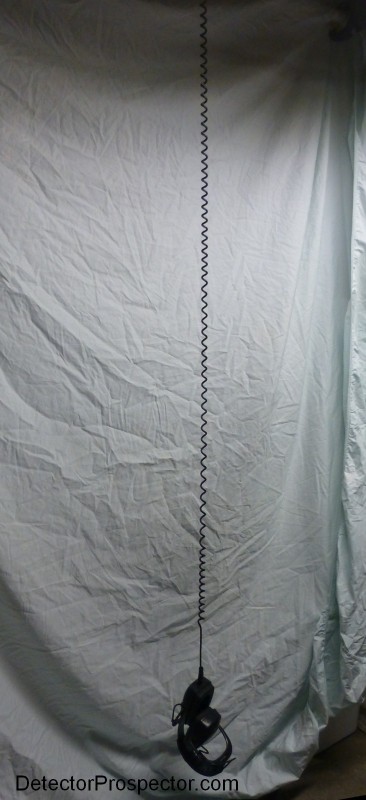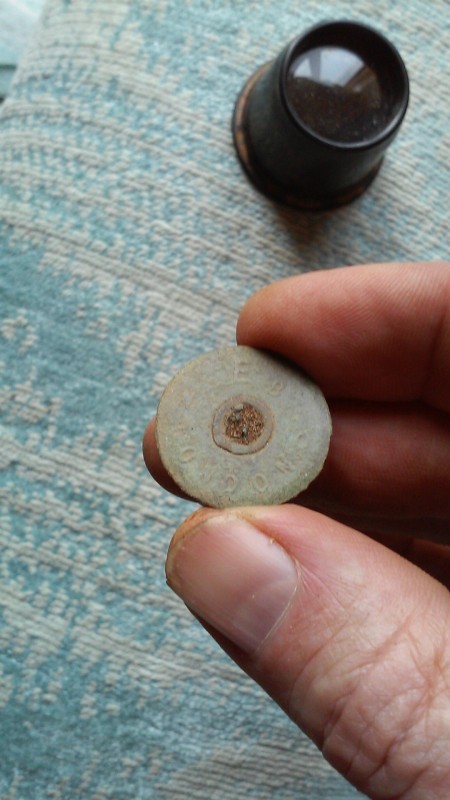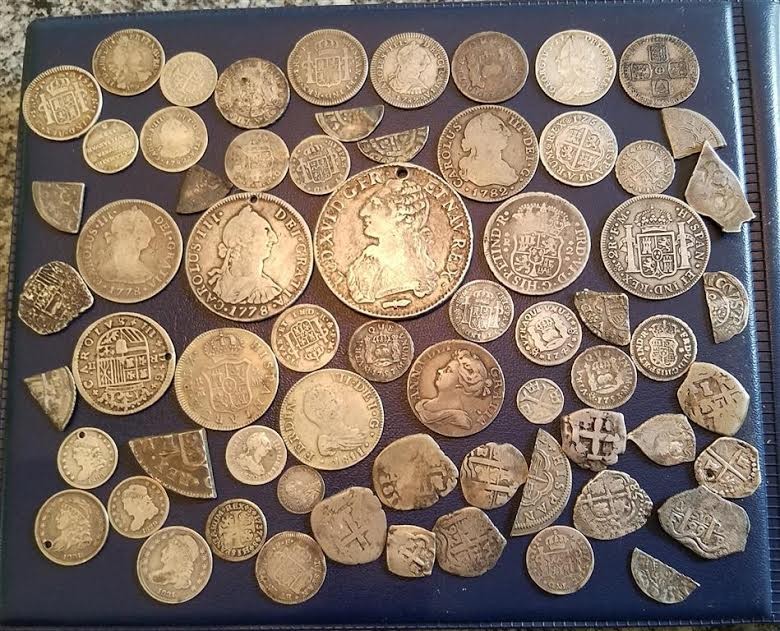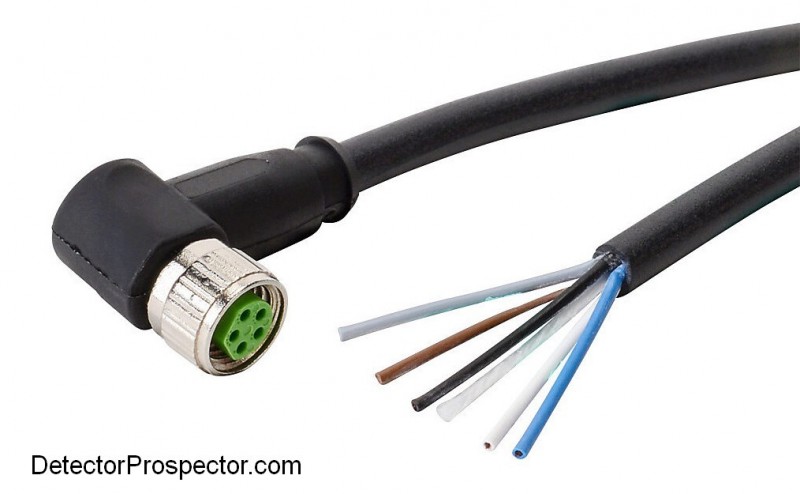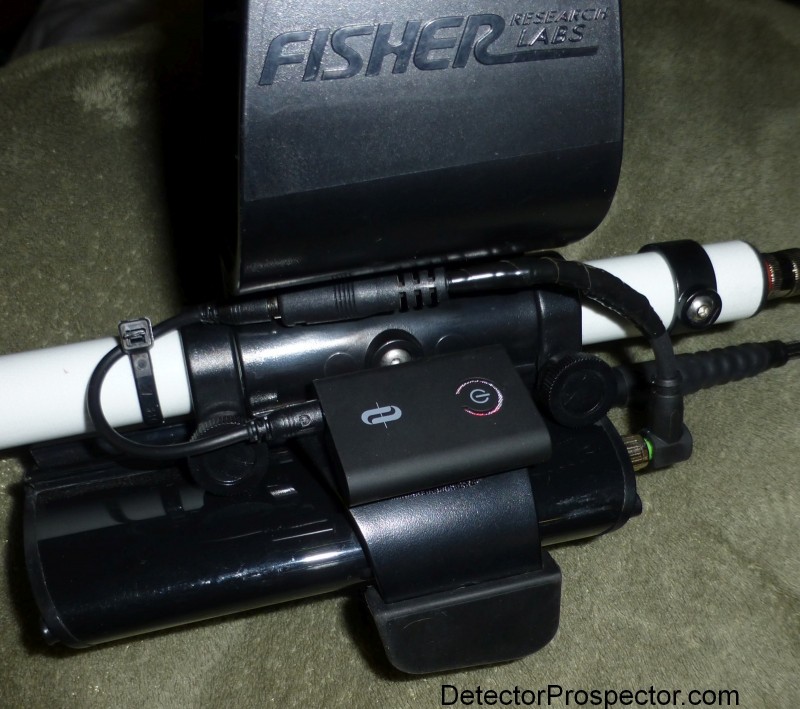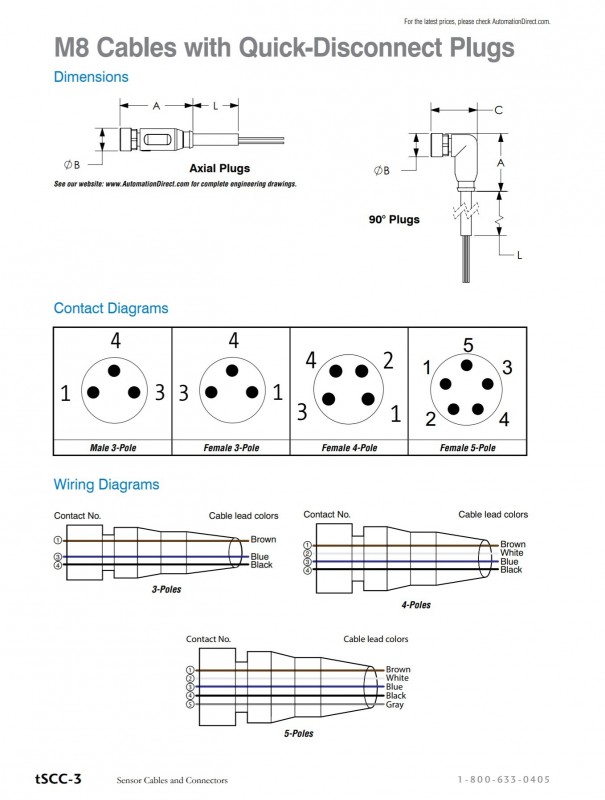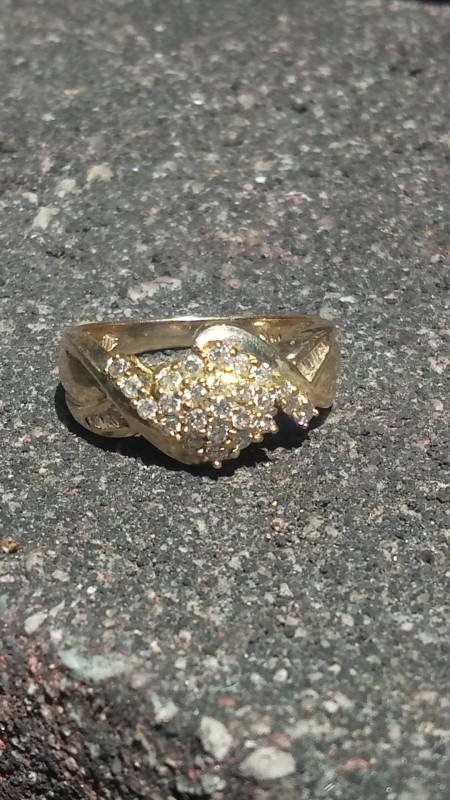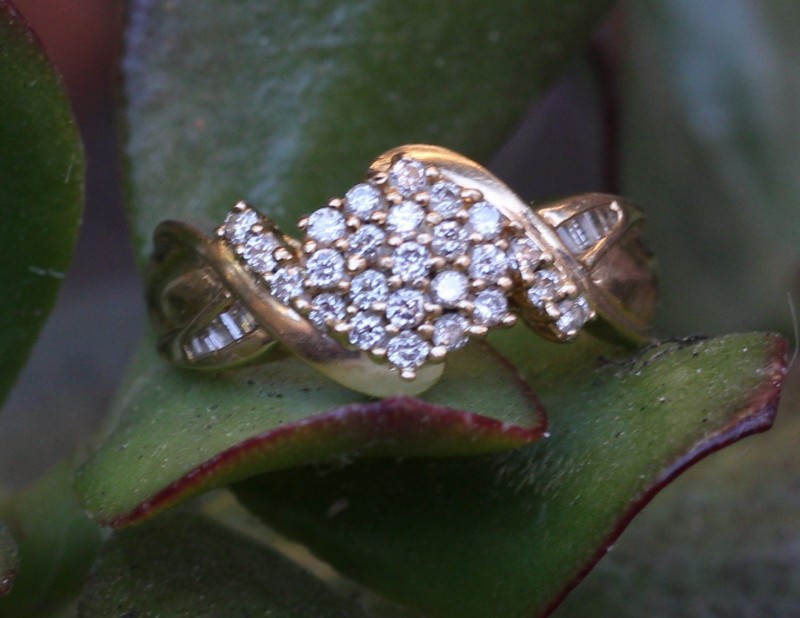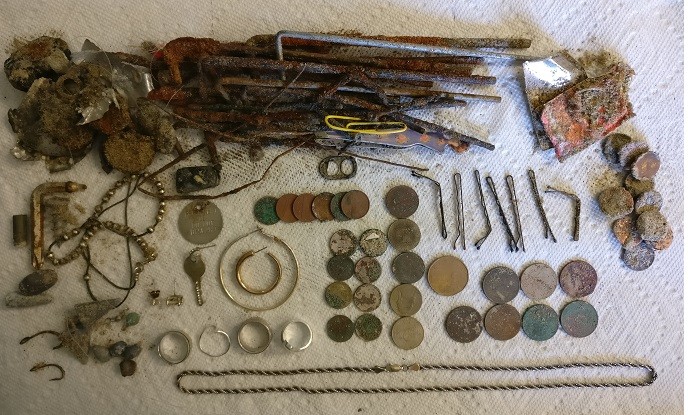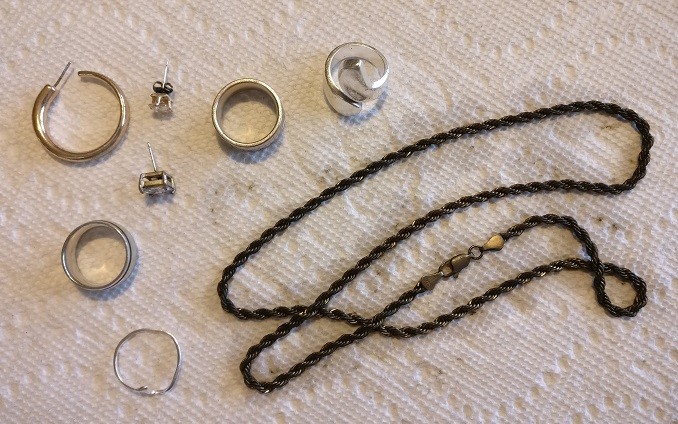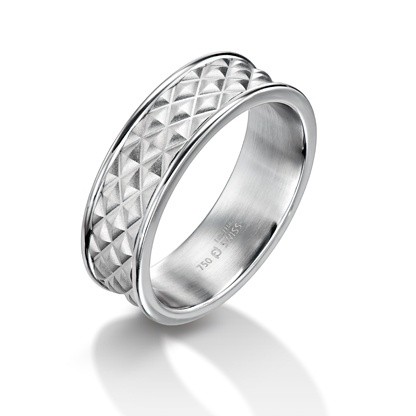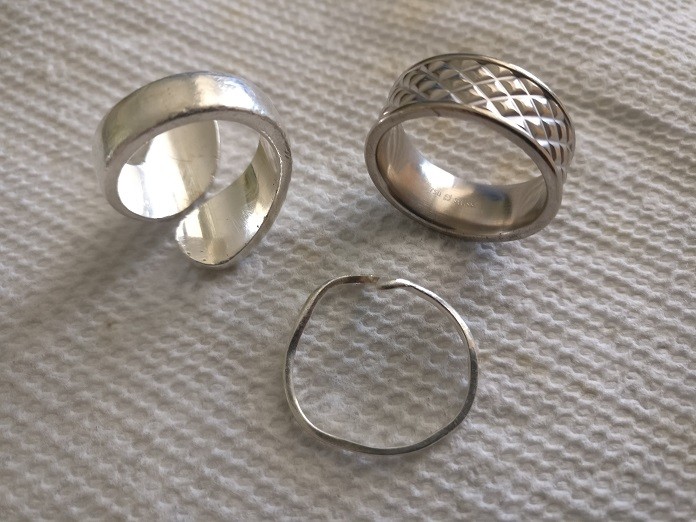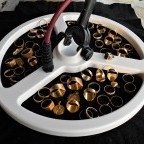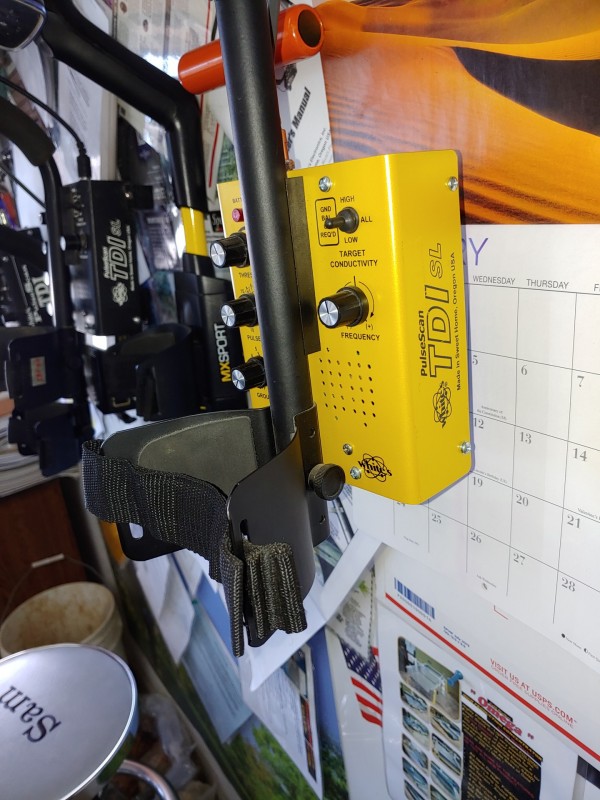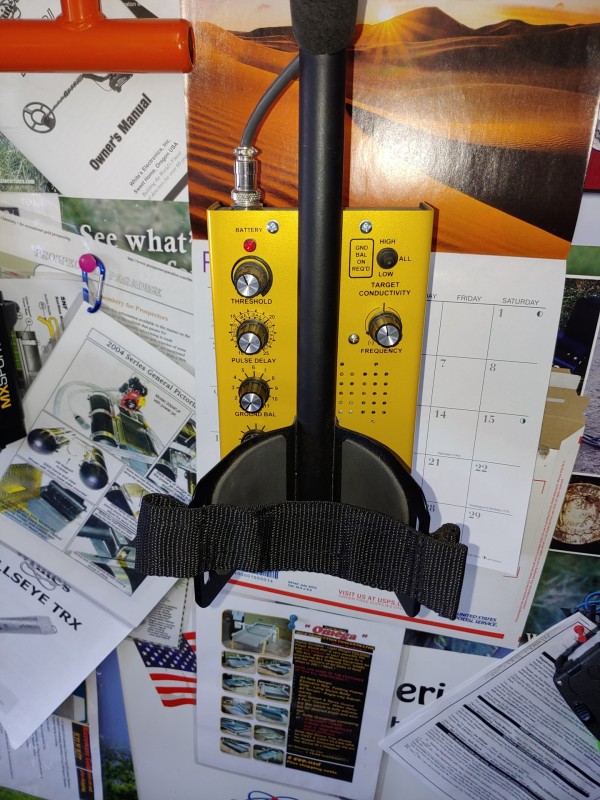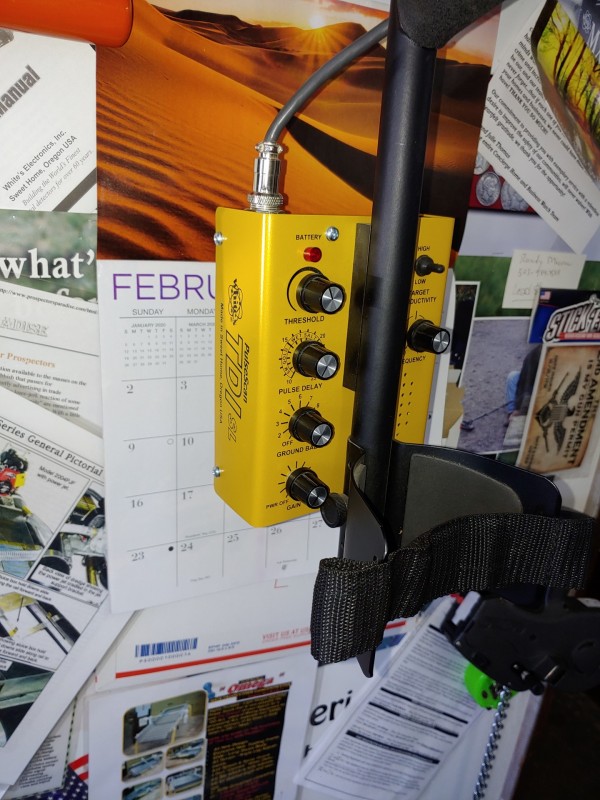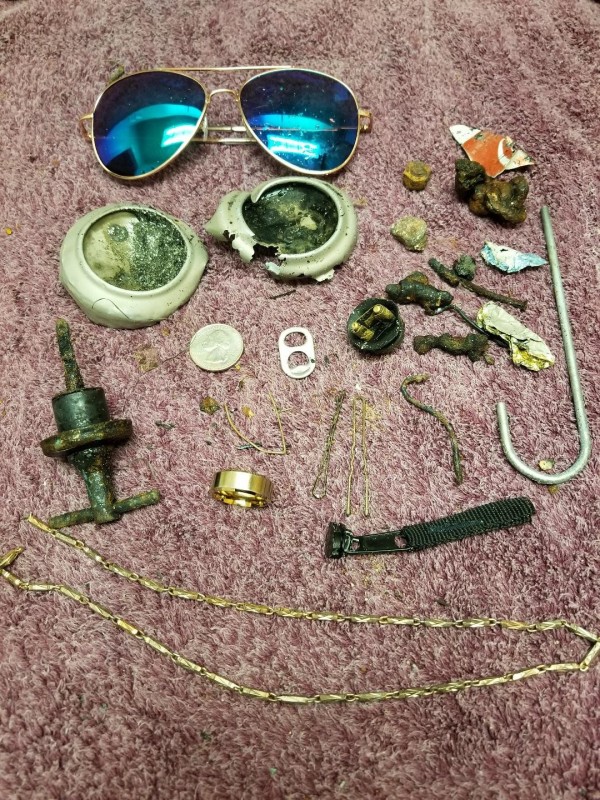Leaderboard
Popular Content
Showing content with the highest reputation on 07/05/2020 in all areas
-
I received my AQ 1-1/2 weeks ago and have been out with it twice so far, my first hunt was last week Sunday for a combined 5.5 hours between 2 batteries (I purchased an extra battery). I hunted at a beach where I detected the previous weekend with my TDI BH so didn't expect much as far as finds but just wanted to get a feel for the new detector, I hunted in the water from shoreline to chest deep with the AQ in all metal mode and presets on the rest of the knobs except for the pulse delay which I tried out from 7 - 11.5. Running with the pulse delay at 7 was a bit noisy especially when swinging the coil away from the shoreline into deeper water but was actually quite stable with minimal falsing on the return swing toward shore, increasing the pulse delay resulted in as expected less falsing/chatter, I ended up at 10 microseconds. I was able to find a bit of change, fishing lead, tent spikes and a stainless steel ring I estimate was dug in the 10" range. My second hunt was yesterday in Waikiki in the bigger of the 2 ponds for those familiar with Waikiki, again strictly in the water and in all metal mode but was able to run the pulse delay at the marked preset 8 with minimal falsing, found some change, pull tabs and a titanium ring. My battery lasted 2 hours 40 minutes which was 10 minutes longer than its first run last weekend, I opted not to swap batteries to hunt longer as the tide was really coming up and ended up calling it a day. As mentioned I also detect with a TDI BH and find the AQ to be very similar so far in performance and audio but again have only 8 hours of detecting time with the AQ water hunting, I have yet to try any dry/wet sand hunting and modes other than all metal. In the pic are the SS and titanium rings, hopefully some precious metals are right around the corner.:) Physical observations - The AQ seems well built quality wise and feels well balanced, I find it easy to swing in the water even with its 12" coil. I'm 6'1" tall and am okay so far with the stock rod length fully extended - I can see where hunting the wet/dry sand a longer rod would give a wider swath while hunting. Others have mentioned the arm strap being short, the strap that came with my AQ seems fine too me. I also secured the headphone cable to the top of the detector shaft with a small Velcro strap as a strain relief as suggested by OBN and others.14 points
-
Tried a dry sand hunt today with the Impulse AQ. Being the 4th of July, the beaches were PACKED! Started with plan A, went to plan B, but, ultimately ended up with plan F. Ended up on a bay beach where in the past, I've found a little jewelry, a few older (40's up) coins, and LOTS of trash. This is definitely one of the trashiest beaches in my area. I'm not sure the name of this beach, or it it even has one, but, I call it "Nail and Nugget Beach" for the slew of nails and melted aluminum can "nuggets" that are all over the place. Probably not a great place to try out a new PI machine, but, one of the few places I could get to today and actually find parking. I tried hunting in all metal, but, that lasted maybe two minutes when the realization of the site hit my ears. In all metal, I wouldn't leave a 10 foot square area. Ok, tone then. Not much better, but, a little. Time for some testing. I brought with me some of the iron junk I had found on my first adventure with the AQ. On the surface, I could actually get the discrimination to work pretty good on rusty nails if I put the reject control to at least 8. It would sometimes work at 7, but, 8 seemed pretty consistent. That was with the ATS at the preset. I also tried the ATS at both ends of it's range, but, it didn't seem to make any difference, so, I kept it at 8 for the first hour or so. Well, it did I.D. some iron, but, not all for sure. It seemed the wetter the sand, the better the discriminator worked, but, it wasn't anywhere near 100% accurate. 50% at best, and that was just real rusty nails. No way could I find a setting that would keep me from digging bottle caps or hair pins. I ran ATS and Reject from one extreme to the other and everywhere in between and couldn't find anywhere it would give any hint of a low tone. Both those items rang loud and clear with a high tone regardless of depth.....and some were very deep. I then settled on putting the reject knob on 10 to maybe help with them and the iron. Hunting around the fire rings was impossible. Just too many targets ringing in your ears. I dug a lot of low tone and mixed tone targets just to get a feel for what the machine was telling me. Most of the time it was telling me there was a good target there, but, alas, most of the time, it lied. Lots of false positives, but, I didn't get any false negatives. If it said it was bad, (or at least had a low tone in there somewhere), nothing good came out of the sand. Good targets, if you can call them that, sounded good, with no iron low tone mixed in. These were the 4 nickels I found, along with the butter knife and other "normal" items in that range. This includes the foil, slaw, and pull tabs too, unfortunately. Too many times the iron sounded just as good though. I also ran the sensitivity up and down in my testing, and found it affected the depth quite a bit, but, not the discrimination, which I expected. So far, this machine IMO is a great beep and dig machine if you need depth. If you're looking for good discrimination, forget it. It's not nearly reliable enough in my book, at least, not yet. I'll give it many more outings at various beaches before I come to any firm conclusions. I plan on hitting another beach at a minus tide early tomorrow morning at a beach that's a whole lot cleaner, so, we'll see. This outing lasted 2 hours and 45 minutes before the battery died. At least that's headed in the right direction from the 2 1/2 hour episode the first time out. Here's the take for the day.13 points
-
I have no idea where to start since most of the things I saw have been said already. I have done only two hunts so far. My first hunt was 2.5 hrs and my second one (today) was about 3.5hrs. Every new detector I get I start from scratch like a new detectorist and just learn it as I go. My first hunt was not good at all since I dug a lot of iron and less than a dollar in coinage. My settings were all metal, ats 0 , sensitivity 8-9, volume/threshold 4. With these settings I was digging anything I heard in the wet and the holes I was making were just too deep so when the 1st battery died I followed suit and called it quits. While swinging I noticed I was getting quite a bit of noise/falsing and I don’t know if it was because I was running it hot. My hunt today was a little better and I managed to pull some decent targets. Setting this time were all metal, ats 2, sensitivity 7, volume/threshold 4. The AQ ran way better, no falsing unless I was running parallel to the water on a slope. Even with the falsing running parallel I managed to hear the small yellow ring and the big gray tungsten. The yellow ring was quite deep too. Today’s hunt I wasn’t 100% into it due to the beach closures going on in Socal. I read online that the beach I went to was supposed to be open today but when I got there it said it was closed. I drove a long way to get there so I wasn’t going to drive back without giving it a try. Luckily during my time there nobody came by to kick me out. There were a handful of people at the beach so that helped some I guess. I am very pleased with the performance/outcome and I’m sure with a little practice things will only get better. The pictures below are from all the targets I recovered today. The fishing lure was an eyeball find. HH10 points
-
10 points
-
I am old enough (64.5) and definitely sore enough from football, kick boxing, golf, gold prospecting, years of metal detecting, 30 years of K-12 teaching, four kids and bad genes to just walk over US zinc penny signals when I'm near the end of a detecting session, no matter how good a day I've had or what detector I'm using. It's just a corroded zinc penny RIGHT!!!!! Nope, too many times to count, I have dug a zinc penny signal and ended up with a shot bottle sized screw cap which is super annoying, junk pot metal jewelry, and large aluminum can slaw or building material. A few times however, luck and sheer tenacity (ignoring the pain) takeover and I dig that zinc signal on the Equinox 20-21 or ORX-Deus (and many other detectors) 82-84 and being stupidly stubborn does pay off . This 14K 5 diamond beauty popped out of the ground at 3" depth July 3rd and seriously made my day. Screaming 20-21 on the Nox, Field 1, 50 tones. It sounded so good I almost didn't dig it, but common sense and experience thankfully took over. 9.8 grams of beautiful gold and 5 Sl1, H, diamonds totaling approximately .25 Karats............. I also found this stunningly beautiful custom made pendant with turquoise, 14K gold and Sterling silver which made for an interesting crown bottle cap type signal with no iron grunt. At 4" deep it sounded like big, jagged, aluminum can slaw or a foil covered beer crown cap and bounced between 12 and 25 on the Nox. Gotta dig those weird signals folks. Jeff8 points
-
During my tenure I defined a new 2-frequency product that would be hi/lo switchable. The low was 6+18 kHz and the high was 18+54kHz. When I left the engineer designing it seemed to have it working pretty well (on the bench) and the SignaGraph was especially impressive. Sometime later he also left the company and the product was obviously never released. I've never heard what happened with it.7 points
-
Good report and Thank God we have another person who hunts in the water.. Try hunting "in to shore" instead of parallel with the beach...., then out.....going out is not as... but going in it's smoother and you can really hear the Halo's of deep old targets. Let me know if that works for you... also Pinpointing...... pumping the coil on deep targets will pull them up better so you can center them to dig. The problem lies you can only swing that big coil so fast in the water..so by pumping the coil to the left..(weak / disappearing signal) then to the center (strongest signal) then to the right..where it fades out...then I just pump back to the center (strongest) and do a little forwards backwards centering then.... dig... , like the wiggle wiggle of the BBS machines they can really come in stronger. A smaller coil would make it better for the........... in the water hunters...Alexandre.. :)6 points
-
I have no problem at all pinpointing with the AQ, way easier to get used to than my GPZ 7000 was. Targets in ground you have to work the signal with the coil. The threshold autotune will make the target get smaller and more defined with every sweep, until you get a good sharp, centered beep. If it will not do this the odds are you have a complex target or multiple targets under the coil. Once out of hole and into a pile, coil goes on edge, about a 45 degree angle, and hit from a couple different directions. I can almost put my finger on the target doing this. In general I also am digging targets that start off being well defined and centered, “round sounding”, more than it appears that you are, so they by nature are easier to pinpoint. Then they get more defined and sharper as I work them with the coil. It’s one of the characteristics of a ring type target, not just the sound but the shape of the sound. Bottom line is it sounds like I’m cherry picking my targets more than you are, which in turn is making them easier to pinpoint.6 points
-
Sorry your hunt turned out so bad. I suspect that any detector would have struggled in that location. AL nuggets, for example can’t be effectively discriminated out with any system of discrimination I can think of. As far as those large pieces of junk - the non ferrous wouldn’t give a low tone unless they were really big or really shallow. As far as the elongated rusty bits, I believe that when you are more familiar with the machine you will find it relatively easy to rule those out as likely good targets no matter what mode you run the AQ in. I suggest you get some rusty nails, some large bits of rusty junk, some pull tabs, some coins, a few gold rings and find a place in your yard or a nearby bit of open ground and start learning how the AQ works on targets you know the identity of. It’s all about sound - you have nothing else to go by. The key to success with any “audio only” detector is learning what good targets sound like and then go hunting where good targets are likely. Sounds like your site for your unsuccessful hunt has - based on your prior experience there with other machines - a very low probability of recovering a piece of gold jewelry. Add to that, your unfamiliarity with the performance of the AQ and I can understand your frustration.6 points
-
I explained on another thread that I was interested in giving the MDT 8000 a spin looking for gold nuggets in trashy locations. All mining camps are places where supplies were hauled in, and none of it left the site, but is scattered everywhere. Miners were not into wasting time, and if possible built their shack, or cabin, or small town, right in the middle of where they were mining. It is not uncommon therefore that there is good gold right in and around some of the trashiest locations in old mining camps. Time has passed and often the wood is gone, rotted away, or left behind when the structures burned to the ground. Old nails and remnants of rusted cans are the most common items, but every manner of metal item that might be needed to survive and mine in the wilderness might be found. There are detectors that might do better on the tiniest gold nuggets than the Tarsacci MDT 18000, but the MDT has a hot 18 kHz mode that is more than sufficient for common VLF nugget hunting tasks. I knew without even trying it that the MDT 8000 would have the sensitivity I was looking for. My main question was whether it offered anything I could not live without for finding gold nuggets in locations littered with ferrous trash. It is also very common in mining areas that the ground is quite mineralized, though that is not something that is universal. I gave the MDT a go at a location where there used to be a shack built on some gold bearing ground out in the Nevada desert. The shack is gone, but there are plenty of cans, remnants of cans, nails, door hinges, bed springs, stove parts, etc. All the metal stuff that was ever brought there, but was not valuable enough to be scavenged as the years passed. The bottom line is the MDT 8000 did not disappoint, and I did manage to find a gold nugget in the limited amount of time I had. The nugget is interesting to me in that after cleaning it weighs exactly 1 gram, as weighed on my very accurate digital powder scales. I find a lot of nuggets that weigh about a gram, but I don't really recall ever finding one that was 100% spot on before. It's probably happened and I did not take notice of it, but this time I did. Gold nugget fresh out of the ground Exactly 1.00 gram! The good news is I did not find anything particularly difficult about using the MDT 8000 on this short test run. I bounced back and forth between mixed mode and disc mode a bit, and far preferred mixed mode. I am big on audio information, usually running detectors in full tones and preferring modulated audio. I also prefer having visual target id information available, I'll take all the tools I can get, but in general I hunt by ear and prefer complex audio. Many people would find the way I run my detectors to be too noisy or busy but with nearly 50 years of detecting under my belt my detectors talk to me and I want to hear everything they have to say. So mostly mixed mode, black sand and salinity off, sensitivity to max, and ground balance manual 668 on this ground. This is admittedly a very preliminary report based on limited use. However, It does not take me long to come to general conclusions about metal detectors. The Tarsacci MDT 8000 is more than capable for the task of VLF nugget detecting, with gold sensitivity as good or better than popular prospecting models running in the 18 - 20 kHz range. While the machine is very capable, there are a couple things that left me shrugging my shoulders a little bit. First, the audio. The tones chosen for revealing non-ferrous targets are extremely high, with the high tone being almost out of my discernible frequency range. Imagine a "tink" sound like tapping a glass bottle with a knife handle. I have some definite high frequency hearing loss, and while the MDT is usable for me, I'd be lying if I said I loved the audio. There are no tone adjustments I am aware of on the MDT, so it falls into the realm of something I just have to live with. There is some ability to modify the response by perhaps trying different headphones looking for those that deliver the tones as they are in the best fashion possible, but that's about it. The other thing is that many discriminating detectors have a common enemy, the flat remnants of steel cans. Think steel cans, thin wall wood stoves, thin steel roofing... bits and pieces of flat steel anything. Coin and jewelry hunters are quite familiar with the challenges presented by bottle caps. If anything the problem is worse in old mining camps due to the volume and variety of this type of trash item. And unfortunately the MDT 8000 is as prone to calling these ferrous targets non-ferrous as are multitudes of other detectors. That's not a knock on the MDT, but it's a bit of magic that if present would make it or any machine stand out in these types of situations. Some problem items, and a small brass item One of the first non-ferrous targets I found with the MDT 8000 is some kind of very small brass.... something. A little pin-like object. I was impressed by this find before I found the gold nugget, and it alone told me the MDT had the hots needed for the job. I can only speculate how the MDT would do with a small coil... no doubt extremely well on very small targets. For now however the coil that comes with the MDT 8000 is the only one available, and since this machine is aimed at the beach market, all the push from other people seems to be for a larger coil. I'd be surprised therefore if a smaller coil is ever made for the machine. The existing coil is very good, though for nugget detecting it would benefit from a solid bottom scuff cover/skid plate, to make it less prone to hanging up on sticks or sharp edged rocks. What about the target id on the gold nugget? I have to admit I was paying no attention to target id at all so do not know. I was just listening for any medium and high non-ferrous tones and digging those. To sum up, I am not here to promote the Tarsacci MDT 8000 as a gold nugget detector and am not saying anyone should go out and get one just for that purpose. I would say however that if anyone has this detector, it is as capable, if not more so, of performing the task as many detectors made specifically for gold nugget prospecting. I plan on giving the detector another and more lengthy workout at another location in the future, though it may be a few weeks before I report back. In the meantime, for anyone with an interest, I recommend watching this video below by Keith Southern. Pay particular attention to the sounds the detectors makes to get an idea of what I mentioned above as regards the tones. And let's close with one more look at that first gold nugget with the Tarsacci MDT 8000. One gram gold nugget found by Steve at trashy site using Tarsacci MDT 80005 points
-
I’m the guy that’s been hammering on the fact the AQ is still a PI. Beep and dig I feel is a little extreme however. That means digging every target, and I’m certainly not doing that with the AQ. In tones in particular there are many targets that clearly say “don’t dig me.” In some locations however there will still be vast amounts of stuff that sound good enough that you have to dig them, and they will turn out to be junk. Personally, I was pretty good at using tones on the Infinium, ATX, and TDI to pick targets, and I do not find the results with the AQ to be significantly different as regards discrimination capability. The TDI could discriminate every bit as well as the AQ in my experience. The AQ mainly adds as much depth as is probably attainable in a PI designed for the beach environment. But VLF like discrimination capability, or even close to it? No. Long story short your results unfortunately do not surprise me in the slightest. That results like this would be seen was obvious to me as soon as I saw the picture below posted back in December of LE.JAGs finds using the AQ on a volcanic sand beach. The rings are nice of course, but look at the junk dug doing so, which mirrors the type of junk you dug. If the location has the rings, great. But if not... well, all you are going to do is dig junk, and lots of it. Even before I saw the picture though I was expecting this. It’s just the nature of the technology being employed. It’s still a PI. The best I’ve used yet if I overlook the battery system... but still a PI. Personally I’m a huge fan of the AQ and am thankful to finally get my hands on one. Like I said, the best performing beach PI to date in my opinion. But it does not replace a VLF any more than any PI before really has. Most hunters in most locations are still going to want to stick with their trusty VLFs. The AQ is for the kind of people who have always had a soft spot for PI detectors for one reason or another, and I don’t see it significantly changing the fact that PI detectors are a niche subset of the overall beach detecting market. Great post Mark, sorry you did not get lucky on your outing. If it makes you feel any better, I’m still waiting to score my first gold ring with the AQ. I seem to have lost my mojo lately in that regard!5 points
-
I’m not disappointed at all. I’m one of those guys who is looking for depth / power in a PI. I’ll dig the trash to find the treasure. I found this ring about a year ago. It is 14K and rang a solid 14 on the Equinox. Identical ID to all the pull tabs I was finding. I was hunting the wet sand just about at high tide line which was littered with pull tabs and bottle caps. Apparently no one was digging them so I figured their might be a ring. Sure enough!5 points
-
The headphone cable on the AQ underwater headphones is over 6 feet long. But it is coiled up so tightly it pulls on and stresses the cable near to where it connects to the detector. Now certainly a good preventative measure is to use a tie wrap to attach the cable to the rod under the elbow as a strain relief. I'm a little lazier though and want my headphones to not be pulling that hard in the first place. The cable should hang with a bit of a slack in it before it gets to the detector, instead of pulling sharply upward. So this is an oldtimers trick to relax the cable on new headphones. Just tie them up and let them hang. You usually do not have to worry about them getting too long. In fact, you may have to do it again later as the try to go back to the original coiled configuration. But I get mine to where I want them, and worry a lot less about stressing the connector down the road.4 points
-
its just an old brass shotgun shell , but if you knew how hammered this spot is you would be impressed to . Took the 600 and small coil out to iron hill and nver exepted it to pull another target out of this pounded spot but it did, i was using the 6" coil and had it in park 1 sweep speed 3, and 0 iron bias , all metal and you get low and high tones of the ends of the cut nails but only in one derection. wel in the mist of this mayhem i got a mid tone but was weak in one derection but becuase it seems more solid i dug it and from 6" down comes a very old brass shot shell . wich blew me away because ive hit this spot so hard its a grassy ovel about 30ft long and 25 ft wide just amazed4 points
-
Good report! Your experience tracks what I’ve seen the few times I tried to use a PI on our Florida beaches... they just weren’t for me. Digging down 22 inches because a PI can’t discriminate well at all is not my idea of efficient detecting and at 72, I’ll stick with my VLF machines.4 points
-
3 points
-
I shy away from absolutes in life, including detecting. I personally advocate for having both a VLF and a PI, for both land and water hunting. Personally I use PI detectors for almost all my detecting, whether for gold nuggets or on the beach, but I would never be caught not owning a great VLF. Owning one detector is like having a toolbox with only one tool in it!3 points
-
You're right...Unluckily I tried any way to set the lowest delay with scarce results despite 50% Gain. I hunt in a strong salty area, where is really hard to keep quiet the machine even at 17uS. I finally managed good results only raising up to 20uS and despite using GB on to skip coins, I finally used with full gain and rock solid treshold the Tdi. Surprisingly, our loved gold rings don't disappear with higher delay with this machine...The scary thing is the GB knob cautious use regard the black hole!3 points
-
Generally speaking, and with regard to PI performance, it is preferable to reduce any Gain or Sensitivity settings before any Pulse/Reject settings. I would rather hunt at 10uS and a low Gain rather than 15uS and a high Gain.3 points
-
The whole point of a PI as far as I’m concerned is to handle mineralization that’s cuts VLF performance by 30% or more. So from my perspective there is no reason to consider a PI for most Florida detecting. Though I imagine there are a few people swinging a GPX with a large coil on the Treasure Coast looking for that extra depth.3 points
-
I will be using my Impulse with the battery end well out of the water while shallow wading or on the beach, etc. I wanted to get away from wired phones and save the waterproof phones for when I actually need to submerge the machine. No sense putting any more wear and tear on the cable than I need to. So I found a source of relatively inexpensive M8 pigtails and cables, AutomationDirect. Never ordered from them before, but it was easy and cables arrived in two days. I got two pigtails for the headphone 5-pin connector, one straight, and one 90 degree. And I ordered a couple longer 4-pin cables for the power connection, to work with a high capacity power pack I have on order. More on that later when it arrives. I decided to use the 90 degree cable to make an adapter for my new TaoTronics transmitter/receiver box so I can use my Minelab phones, which I like, with all my detectors. There is also a less expensive transmitter only version. M8 5 pin 90 degree pigtail I dug through my pile of adapters and found a spare mono 1/8" extension cable and cut it off, saving the female end for this project. The TaoTronics comes with a RCA to 1/8” female cable that would also probably work for this. I hooked up the 90 degree cable and powered up the Impulse. I randomly hooked up the two wires from the 1/8" socket to the five while having some stereo earbuds plugged in, and found that the brown and gray wires gave me audio in both ears. According to the chart below brown is #1 and gray is #5. I wanted to make very sure there was audio in both ears using the mono socket but with stereo phones plugged in, so good to go there. I cut the cable down short, spliced and covered with shrink tube, and wrapped a little electrical tape on to add some beef. Not pretty but it will work - a typical Herschbach job. I bent the cable under the armrest, and added a stick on square of Velcro to back of the TaoTronics transmitter and the leg stand. I'll add more squares to my other detectors so I can move this transmitter around to whatever I am using. A little tie wrap secures things. Fired it up, paired easily with my Equinox 800 headphones, better audio than the Fisher phones, and frankly the Equinox phones are not the best in that regard. Cheap, super easy... I'm quite pleased with this. I can of course use 1/8" type wired phones or ear buds if I want. I'll make another adapter with the straight connector but go to 1/4" with it, so I can use my Sun Ray Pro Gold headphones without an extra adapter. I'll probably make that cable a little longer than this one, which I wanted as short as possible. If you got the TaoTronics transmitter only box for $20 and this cable for $8.50... well, this is pretty cheap and easy, and will work with a huge number of headphone options. Ironically my new Tarsacci MDT 8000 comes with am M8 to 1/8" adapter with one little problem. Fisher uses a 4-pin connector for the power/headphone combo cable, but then for some reason they use a 5-pin M8 for the headphone only connector. The MDT 8000 headphone adapter is of course 4-pin. I swear they must all have secret meetings to make sure nothing from one detector ever works with another. Click or double click photo for high res version. AutomationDirect M8 Cable Specs pdf3 points
-
When it is a 14k/6g/33 diamond ring! And then there were 4 other cheap rings to go along with it and two cheap chains. These were from the same beach that had next to nothing on it for over a week. In addition to that loot there were lots of other targets. After I found the first ring and the gold ring in my 3 hour plus session I decided to switch from Beach 1 to Park 1. It just bangs harder on the coins and targets on the damp beach sand better than the B1 that I have used for years now. It also seemed easier to pinpoint. If I went down to the black sand line it would get noisy at 23 or 24 so these were all targets up the slope in a very compressed beach. I found nearly nothing on my mile hike in and same hike back out because there was nothing in the wet and the top had been waved over/blown out without a cut. It was a glorious full moon night with no one on the beach and most thankfully no other detectorists. Mitchel2 points
-
I've been thinking and posting a lot about the Impulse AQ lately as I patiently wait my turn to purchase one. Perhaps my TDI Beachhunter realized this and decided that it needed to put out a little more than it has during my last few trips to the beach with it. Same thing that happened to forum member, Seeker, happened to me yesterday. The news media had mentioned a particular beach being open on July 5th (that starts after midnight right?) but when I got down there there were signs all over saying that the beach was closed the 4th AND the 5th. Fortunately, I had a backup plan and, as has happened so many times before, the backup plan was probably better than my original one. Eventually, I found some wet sand to hunt in where the top of the slope showed indications of recent sand movement. It didn't take long to find pockets of targets but there was a fair amount of trash along with a few coins here and there. I typically hunt in "all metal" (ground balance off) with the Beachhunter because, after years of using the Dual Field, I'm more comfortable in that mode and like the extra depth when needed. I followed the tide out and the number of targets dropped off considerably. During the next couple of hours I searched all over for low-on-the-slope pockets occasionally digging that discouraging 1 foot deep pull tab or piece of can slaw. I only had about another hour left where I was parked when I started to get some promising targets in an area about lower-mid slope. First I hit a couple of coins, then a cheap ring followed by a heavy fresh drop silver ring, a neck chain and not long after that a lightweight fresh drop silver ring. I was "in the zone" when you can almost sense that the gold is near and time was running out on me. Suddenly, a nice loud tone rang out in my headphones and with one scoop the target was out of the hole. With my hand I grabbed the unseen target out of the mound of wet sand and immediately felt the unmistakable shape of a nice sized ring band! In the improving daylight I could see that it was stamped but I've been fooled so many times that I tried not to get too excited even though with the weight and feel I was pretty confident that I had a good one and my last target of the hunt. The chain is stamped .925 but appears to be plated. The ring in the top left of center is stamped "750 Swiss" and weighs 13.3 grams. https://www.furrer-jacot.com/us/wedding/gents-only/white-gold/71-28290-0-0 GL&HH!2 points
-
There's a few beaches here that are loaded with trash too. At least I can attack those with a scoop and not have to get on my hands and knees with a Lesche to spend 5 minutes getting a Zincoln.2 points
-
Thanks Chuck, Digging stinking post 1982 Lincolns is very labor intensive since they are so conductive and like to squirm around in the hole (at least for me!) and are a serious pain to clean up and tumble for return to the bank/CoinStar. However, they eventually are worth the trouble. I will happily dig a few hundred of them to land a few $500 to $800 rings per year. So far, I have been fortunate and have managed to keep up that pace during the last 4 years. Jeff2 points
-
At the beach, I agree. I just can't bring myself to do it at an urban park......especially if I have to dig for it in the turf.2 points
-
Hello, First, I forgot to mention another related advantage to having the higher frequency options on Equinox - this is somewhat related to the fact that the higher frequencies tend to be better suited to detecting smaller targets. The higher frequencies may allow you to separate targets better in situations where there are high densities of targets in the ground. Separation of adjacent targets is mostly a function of how quickly the detector recovers after it detects and processes a target signal during your coil sweep. High recovery speed detectors (like the Equinox) enable adjacent targets to be picked up better because the detector has detected, processed, ID'd and signaled the target's presence very quickly and is available to detect the next target during your sweep. Secondary factors that help to better separate targets are the coil size and the operating frequency. Intuitively smaller coils and higher frequencies working in conjunction with the detector's set recovery speed enhance separation. One thing to be clear on though, if you haven't already started to figure this out, metal detecting is all about balancing trade-offs. In this case, optimizing for target separation can result in a decrease in detection depth. That may be OK for the situation at hand, but you just need to be aware of and balance the tradeoff. Your ability to know the capabilities of your machine and to balance its settings and the associated tradeoffs are skills that enhance your detecting success and just like learning a musical instrument takes time, practice, and patience. It is this learning curve phase, where you are digging a lot of junk targets, that many new detectorists find daunting, boring, or frustrating and they abandon their new hobby as result. All this to say, do not worry about asking lots of questions at this point. There is not a lot about metal detecting and metal detectors that is necessarily intuitive. The questions you are asking indicate actually the opposite of being "slow". You are asking good questions, especially considering the natural language challenges that come with such a highly technical discussion. Now to answer your specific question regarding ground balancing: On both the 600 and 800, ground conductivity effects are balanced through manual action one of two ways. The manual method has you manually vary the ground balance setting as you listen to the ground feedback noise while bouncing the coil vertically above the ground until the noise "nulls" out or reaches a minimum. The other "auto" method automatically adjusts the ground setting while you bounce the coil above the ground. The auto GB method is the one that is most commonly use. The 600 and 800 also have a tracking mode that automatically rebalances the detector while detecting as changes in the ground conductivity are sensed. This method has some advantages in highly variable ground conditions but also has drawbacks because it reacts slowly (so it is not good to just start swinging in tracking mode without first setting the ground balance using auto or manual gb) and can also result in reduced sensitivity on very small targets like small gold nuggets because it is not as precise as manual/auto ground balancing. Regarding your question on whether the 600 is good for archaeology: Be careful about detecting information or marketing sites putting detectors into specific categories. When it comes to coin shooting or detecting artifacts, there is a lot of overlap and gray areas. The 600 does just fine at recovering artifacts as it does with coins, beach detecting, and also its capabilities to detect natural gold. Like I said previously, the advantage of the 800 is slightly more versatility in settings that enable you focus on more specific target types or deal with unusual site conditions (lots of trash, difficult soils, etc). Just about any decent modern detector will do well on detecting artifacts as well as coins limited only by the versatility of the settings to handle the site conditions and target types at the site. Hope this helps.2 points
-
I do find it enjoyable already, even if all I've dug is junk. I even already have permission to detect on a farm that has been around since the early 1800s, and could have had some civil war activity on it. I can't wait to get the time to go there and see if I can find some goodies.2 points
-
I had the sensitivity at the preset mark 4, I suppose setting it lower could help reduce falsing but 4 is already somewhat in the lower range approaching 0. Yes the rings had a strong response, the Titanium ring I believe was a fresh drop and no more than a few inches deep.2 points
-
2 points
-
Specific examples. I was nugget detecting in an area where multi lit up the hot rocks. Some experimentation revealed that the hot rocks went away using 20 kHz only. Employing single frequencies is a well known way for dealing with EMI in certain locations. 5 kHz only has been noted as having benefits of silver under some circumstances. And in this latest test here, GB got some surprising results using 40 kHz only in Gold Mode. More to your question directly however. Do you need the 800 over the 600? The 600 will do everything most people need, and will get exactly the same results on most targets as the 800. For beach detecting in particular the 600 is a great value, if that’s all a person wants to do. Others will insist the 800 has features they absolutely cannot live without, well worth the additional outlay. I fall into the camp of preferring to have capability that perhaps goes unused, than to find myself in a situation where I wished I had it but don’t.2 points
-
Welcome, spandexlurch! (Please create a post here to tell us more about yourself.) Here's a link that will help address your questions:2 points
-
The answer to your "is there any advantage" question is yes, provided you understand what 20 and 40 khz individual frequencies bring to the table. Since you are asking the question, I take it that is not fully understood by you as a newcomer to the hobby and to the understanding of how metal detectors work, so let me explain how detector operating frequency affects your ability to detect targets. First let me say that what I am about to tell you is applicable in general terms. It is more of a guideline rather than set in stone because metal detectors are actually relatively crude tools that can only infer what the target is underneath the coil using relatively crude induction balance techniques and signal processing. The detected behavior of the high frequency magnetic field induced in the target by the "transmit" coil is picked up by the "receive" coil and now typically run through software based signal processing provide a best guess as to what the target is - frankly it is amazing to me how well detectors can actually ID targets based on what physical parameters they are actually detecting.. The detected behavior is influenced by the strength of the magnetic field transmitted into the ground, the frequency of the magnetic field, and the characteristics of the ground, and characteristics of the target itself. All of these aspects have multiple variations that affect how the detector "see" the target. Without going into all of that, there two main physical aspects of detector frequency that are important to the detectorist. First, magnetic field strength depth penetration into the ground. Higher frequency signals like 20 and 40 khz tend get attenuated more than the lower operating frequencies like 5 and 10Khz. This means, in general, the ultimate depth of detectable targets is less when you are using higher frequencies than lower frequencies. The affect can be subtle from a few centimeters to several centimeters depending on soil conditions and the targets of interest. The second thing to know about frequency is that it tends to provide a stronger receive signal for targets that are small in physical size/mass and/or that have a lower overall specific conductivity. This makes these higher frequencies more suited to finding small targets like jewelry and/or smaller targets comprised of lower conductivity metals like natural gold, gold jewelry, lead, brass, aluminum. These targets will tend sound off better at higher frequencies than lower frequencies. Larger and/or high conductive targets like silver coins are detected at depth better with lower frequency signals. Again, these are relative effects, not absolute and subject to all the environmental variables and physical variables that make metal detecting a challenge. Another advantage to have additional individual frequencies to choose from is that it gives you more flexibility to choose and operating frequency that may not be subject to local electromagnetic interference from nearby sources of noise such as power lines and cellular telephone towers, wifi transmitters, etc. Anecdotally, higher operating frequencies also tend to be more immune from the more common sources of electromagnetic interference, at least in the USA. That all being said, I usually detect in Multi IQ (multi frequency mode) most of the time because of the advantages multi has over single frequency operation, but it is nice to know I can go to single frequency on those occasions when needed, and in the case of the 800 nice to have the additional single frequency choices. Bottom line, versatility and options are generally good things to have at your disposal when metal detecting because you seldom encounter perfect conditions, but it is also rare that you have to invoke these options on every outing. Will an Equinox 600 suit the needs of 95% of detectorists 95% of the time - I would say yes. Can you find natural gold with the Equinox 600 even though it does not have a gold mode? Yes. The question you need to ask yourself is whether the Equinox 800 is worth the price difference to you. Your stated goal was to seek natural gold and coin shooting. Those are two very different types of metal detecting with different sites, strategies, and approaches. Which favors you getting a versatile detector. The 600 is pretty versatile, but the 800, even more so with Gold mode, a user profile slot, a larger range and more precise control of detector recovery speed and the iron bias filtering, and more flexibility when it comes to setting up the target tones features. You simply need to answer for yourself whether you will have regret because you don't have these additional features if you choose the 600 or be happy you saved some money. As someone new to the hobby, that is hard to answer. If you can afford the 800, then I suggest you get it. If you are not even sure if the hobby is something you will really want to stick with, I would suggest getting a capable entry level machine such as the Minelab Vanquish, 440 or 540 which has pretty good performance at a lower cost and investment risk. HTH2 points
-
This is intelligent use of the PI detector......having a stable machine will get more gold rather than running quick delays that will have a PI screaming all day long. I don’t care if I miss some small scraps of gold because the bigger pieces won’t be missed.2 points
-
A nice find,the 6'' coil it stays on my detector 95% of the time,its extremely light and because its so small as we are approaching harvest time soon in the UK you need a small coil to get in between the stubble rows and this is when this small coil really earns its keep. For its size its also pretty deep as well,also use it in AM mode but for me i prefer Field1 it just suits my sites better. Well done2 points
-
That's about 75 bottle caps less to mask over the potentially better deeper targets. I get all that crap off my beaches so that I can concentrate on the deep stuff next time, and if I happen to find a gold ring mixed in with the caps, all the better.2 points
-
I tried the gold modes and this earring is smaller then most.In park 2 in multi I had sens. at 20 with recovery at 4 with f2 0 bias.20 and 40 kz. sens. was near max . The gold modes were about the same settings.I think the nearby junk hinders me from getting a distinguished signal on this target.That is why small coils have their place.None of my gold earrings will give a id at 10-12.2 points
-
A machine I really wanted from Whites... DFX running at 48 kHz able to use GMT coils. The ability to run at a separate lower frequency would be nice, but not really needed. What I wanted was the full range SignaGraph tied to 48 kHz operation, with both raw and normalized VDI options. The SignaGraph is a true visual display breakthrough that went underutilized by White’s. I prefer it to the Minelab versions in some ways and having a nugget detector with all the tuning and discrimination options of the DFX would have been something, especially if paired up with MXT ground balancing. The V3i at 22 kHz is close though, so I’ll have to be happy with that.2 points
-
Nice hit. I think this machine will not disappoint in the depth category. My two most favorite things about the AQ is how quick the coil responds when you pinpoint and how nice and smooth the threshold is.2 points
-
Nice job Steve! Cable looks tucked and secure. Looking forward to the power pack fix.2 points
-
Root canal? That sounds painful. 😧 😄 I didn't have a lot of choice but to do the dry sand since the tide was high and my time was limited. But dry sand can yield information too. That's all I'm going to do is gather info until the fall when I can do all day hunts and work the wet sand hard. I know some people are disappointed in seeing all that trash, but that is the way I gain knowledge about a new machine. I did the same with my GPX for a while, until I learned where it was best to use and where it lacked performance. The dry sand has yielded me a huge amount of silver coins from this beach, so that is where the GPX works the best (for me). The GPX handled the wet sand OK but the amount of iron killed it's performance. The wet sand and water is where I'm hoping the AQ can excel at. But in the meantime, I hope everybody gains some insight from these dry sand hunts. I hope no one is discouraged about what this machine may be capable of doing, since it hasn't been out long enough to even scrape the surface of what it may do. OBN's hunts give you some solid data on what it can do in the water, in an experienced person's hands. I'm sure it will have it's place in dry sand as well, although the trash count will be much higher.2 points
-
It is buried and one that I found in tot lot .It is only a half inch long with small about 4mm stone.2 points
-
I was on my way back from a detecting trip near Winnemucca. I stopped in at Armadillo in Grants Pass, Oregon and saw this hanging on the wall. Apparently, there are only three in existence. This one belongs to Sam. From what I understand, she received this for being the top salesperson in the company with this model. I think this would have been a way better color than the original black!2 points
-
If there is no mineralization, then no need for a heavy, expensive PI, with no discrimination worth mentioning. Most PI detectors do not go deeper than VLF detectors per se; the PI detectors just lose depth far less quickly as ground mineralization increases and ease handling of hot rock. This is especially true of lower power PI detectors running 12V or less, like the ATX. Mild ground, ATX vs Equinox, go Equinox would be my recommendation, especially if you have the 15” coil.2 points
-
Congrats on the gold. Looks like you had some detecting fun.😄1 point
-
Well, this morning's hunt was at a lot less junky beach. Pretty quiet actually. This beach gets hunted a lot, and today was no different. We had our club hunt there today. Just 6 members showed up at 3am, but, there were 2-3 other independents there too. The club hunt is just 2 hours long, but, I stayed after and hunted until the battery went dead.....2 hours and 55 minutes this time. No hunting with a low battery with the AQ, When you get the low battery warning, it's over. Without all the iron and other trash in the wet sand, I went ahead and hunted in all metal and dug everything again. I did switch over to Tone on every target to see how the sound would or wouldn't change depending on what I dug up. It worked in some cases where I would get a mixed high and low signal and those were all junk. Good signals though were still had with junk as well as good targets. So far, the good targets I've found (including today), I could have found with my other machines, except maybe the necklace. It was down about a foot. At that depth on a necklace most machines have difficulty. The AQ banged out a nice signal on it though, so, it would probably see that at even greater depths. Too bad the necklace is plated junk however! Same with the ring. It gave a nice smooth stable signal, but, it wasn't deep (one scoop) and would have been found with any good salt water machine. It's not marked, so, I don't know what it's made of yet. It has a gold tint to it, but, doesn't have the weight to be gold. Probably stainless. I'm glad to at least get some sort of jewelry at this point. The more I use it, the more I think you would be able to find coins and silver with it too. Those targets give the same low tone that foil, and iron will give, but, it's a much smoother and more even tone than the other junk targets I've run across. As you can see, I did find one quarter. It didn't have any high tone mixed in like the junk targets usually do. I expect silver rings might react the same way, but, I confess, I haven't test those yet since that wasn't what I was expecting to find with this machine. I don't know what others have experienced with the AQ, but, I find it the worst pin pointing detector I've ever used. Most targets seem huge, especially when the target is out of the hole and you're trying to find it in the pile. The edge of the coil seems more sensitive than the center, and the target will sound off even several inches off the edge. Normally, I center the target in my sweep and back off until the signal disappears. The target should then be right in front of the leading edge of the coil. Not consistently with this machine. Like other detectors, shallow targets are worse than deeper targets in that respect. I hope it's something I can just get used to, as that is kind of frustrating and time consuming to be chasing the target with the scoop. Here's today's take.1 point
-
Thank you, I've been seriously leaning towards the Vanquish due to price and the fact that my coworker loves his CTX. The reason I was interested in the Ace series was simply due to price, I know little to nothing about the Garrett detectors.1 point
-
Hi Kenne-Bill, Appreciate your summary. Good to see the AQ is in the hands of another water hunter. When fully submerged, do you think it is possible to keep pulse delay at 7 but reduce sensitivity to stabilize falsing? Thanks again 👍1 point
-
Thanks Chase for considering my small pebble throws. I have used a Vanquish 340, 440 and a Makro Kruzer at saltwater beaches. Whatever Minelab means by Beach Advantage I can tell you it definitely worked better than the Kruzer and the Kruzer did very well. The Vanquish is not quite up to the Equinox level but it is really good in saltwater shallow surf, tidal pools, and wet beaches. If the Apex can come anywhere near the Vanquish in saltwater and moderate to high mineralization, Garrett will have really achieved something great. I wish the Vanquish came in a nice control box/arm cuff package like the Apex and Simplex. I really like the shaft system on the Vanquish however. I still disagree on the Equinox iron audio. I still hear plenty of iron responses with -9 and -8 rejected and every other target ID accepted with the iron audio turned down. No need to use the all metal button. thanks, Jeff1 point
-
There is a very important thought process at work here. Nobody, but nobody, not me, not the other testers, not even Minelab, knows exactly just what the Equinox is capable of and what uses people will find for the various modes and frequencies. To a large degree there is a bit of a "throw in the kitchen sink" thing at work here. Then turn it loose in the wild and see what everyone does with it. Collect feedback and data, and incorporate into later models down the road. Why include single frequencies? Good question. The genuine answer - why not? They can do it so they did. But it will mostly just be a way to show people how great Multi-IQ is and how Minelab's statements regarding single frequency really do have a basis in reality. So far for me the single frequency modes are mostly just a fallback position for extreme EMI mitigation and a way to tune the machine down, not up. But that is not to say that tens of thousands of users worldwide experimenting with all these modes and frequency options will not discover uses or oddball applications that nobody anticipated. I never knew I would end up using my cell phone more as a GPS than as a phone until I got it and used it. Equinox is the same thing. It really is new, and figuring out just exactly what it does in the real world and how best to apply it for different uses is going to be a huge part of the fun here once the machines hit the street.1 point


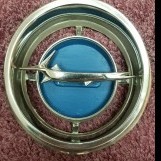

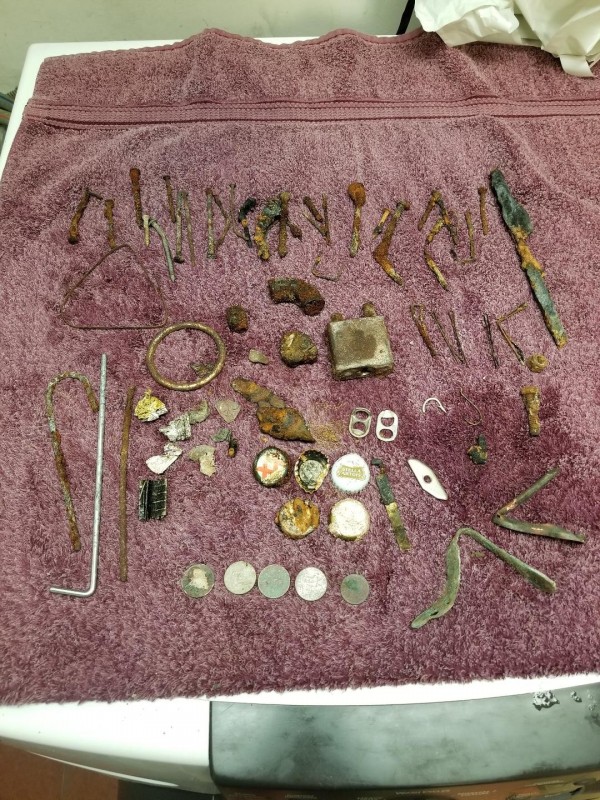
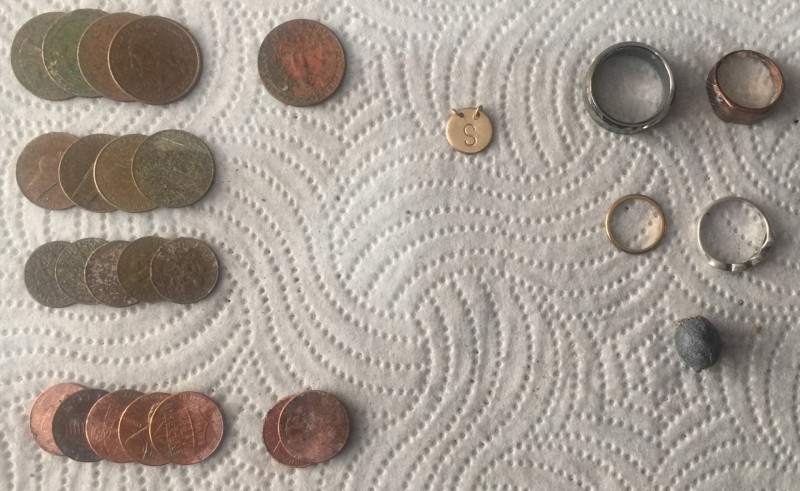
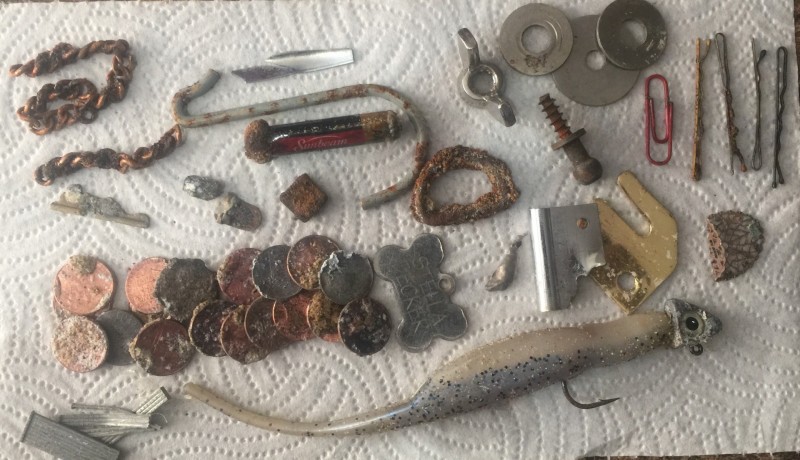
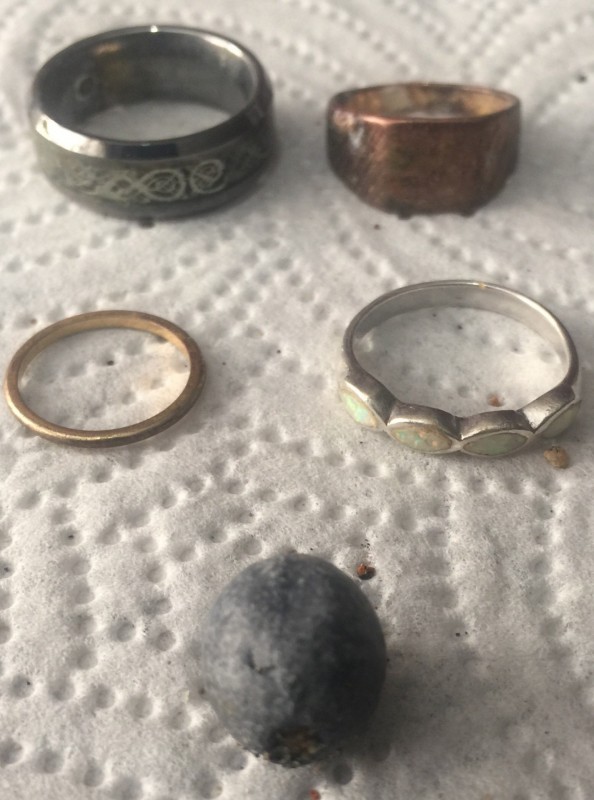
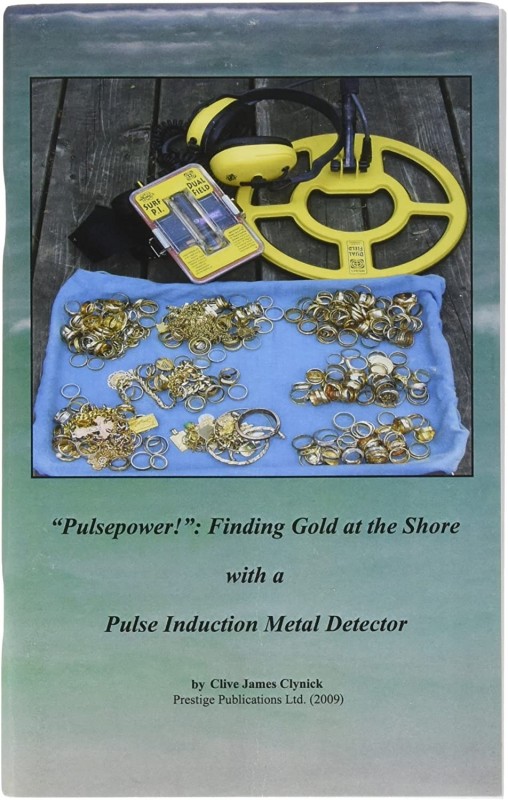

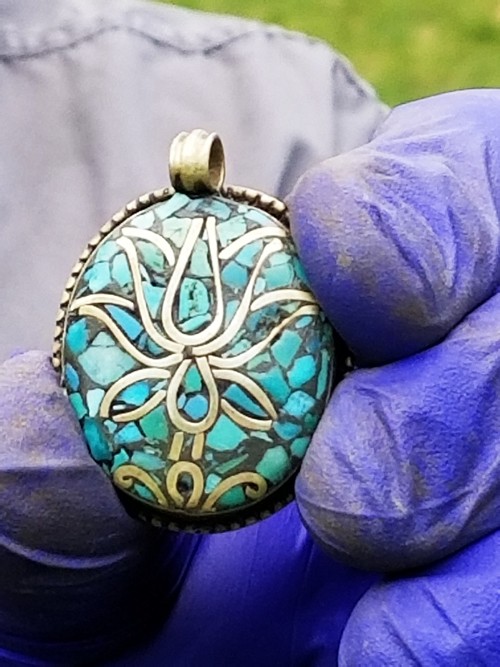

.thumb.jpg.d71314a45f3dc82bf75ac1b96e7e9201.jpg)

